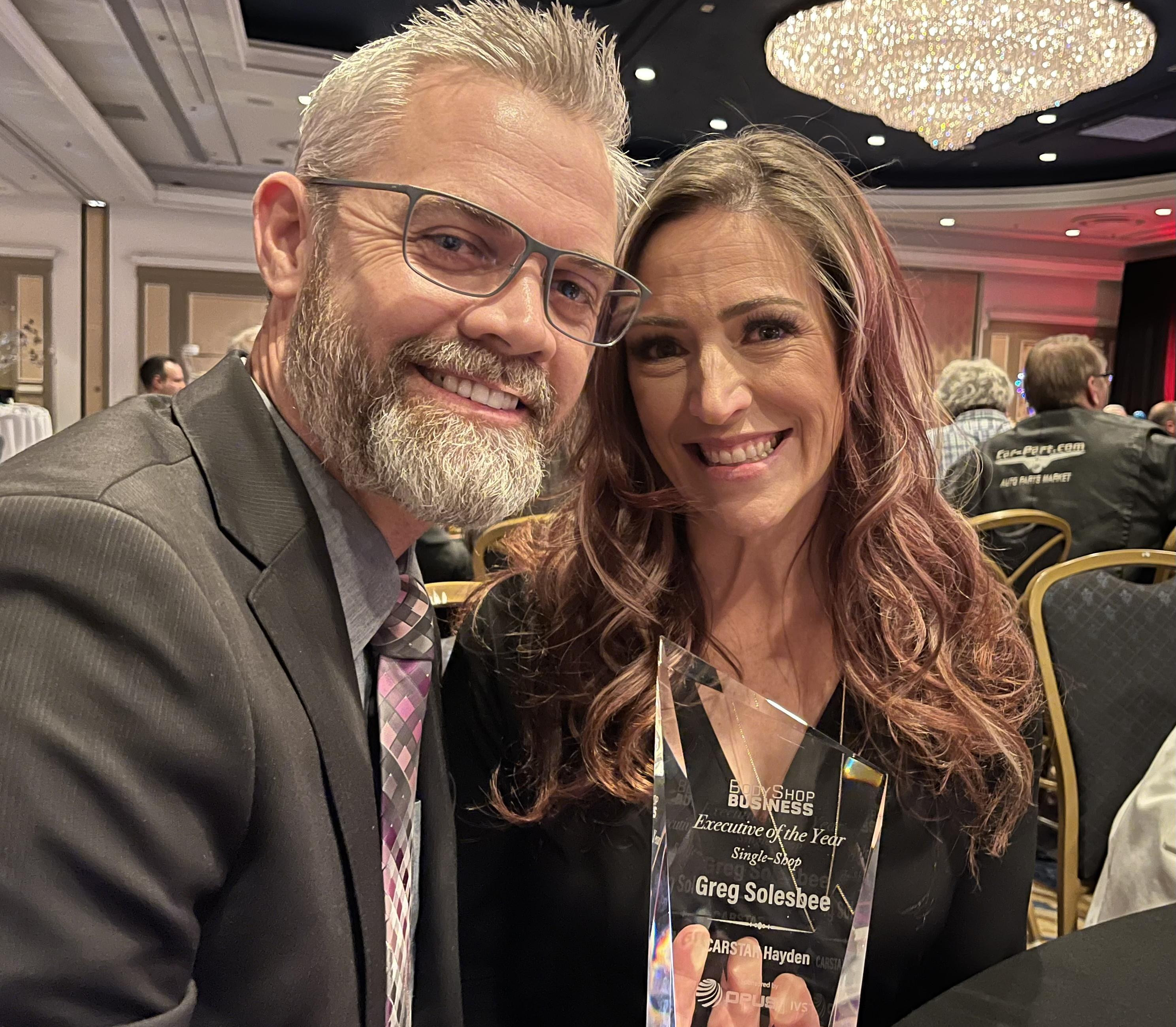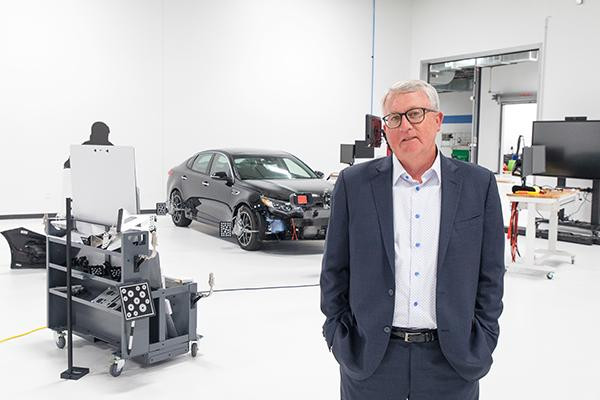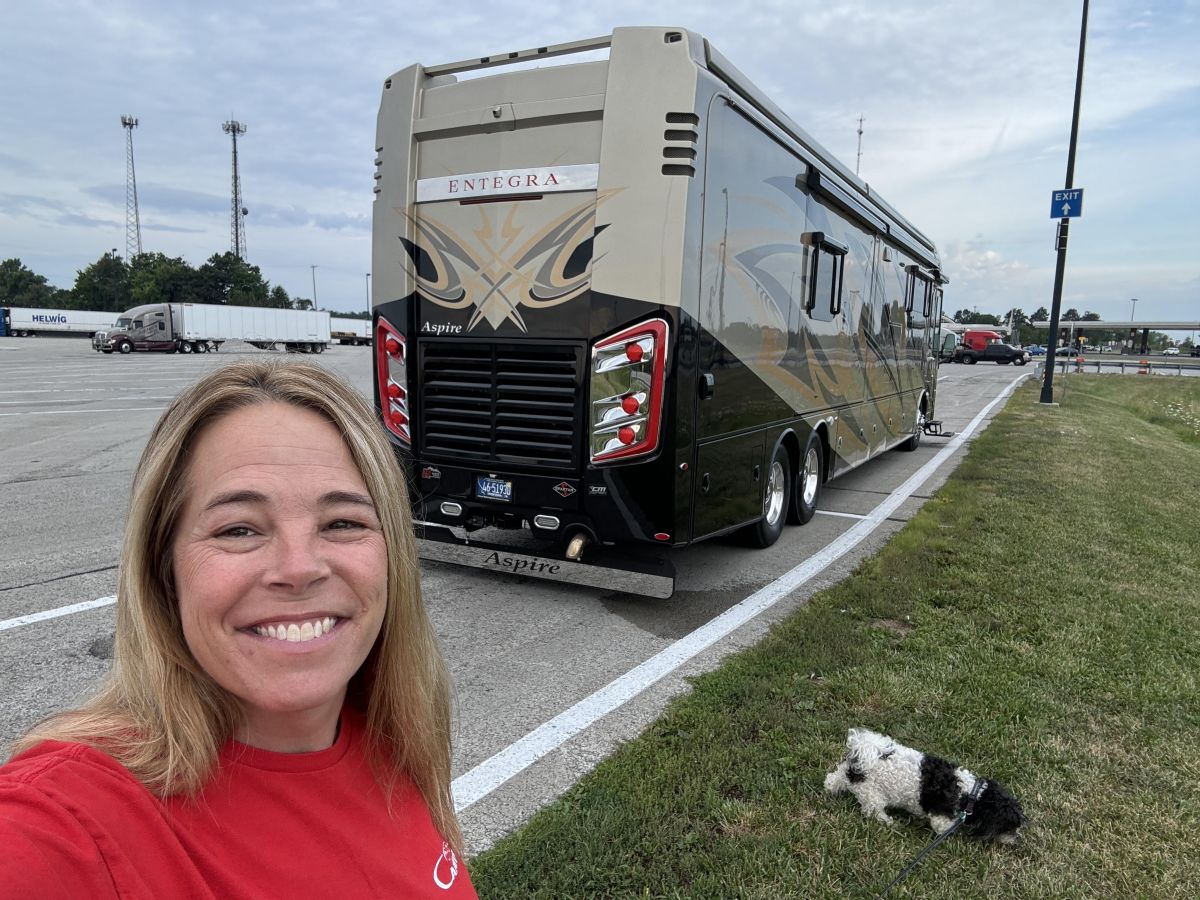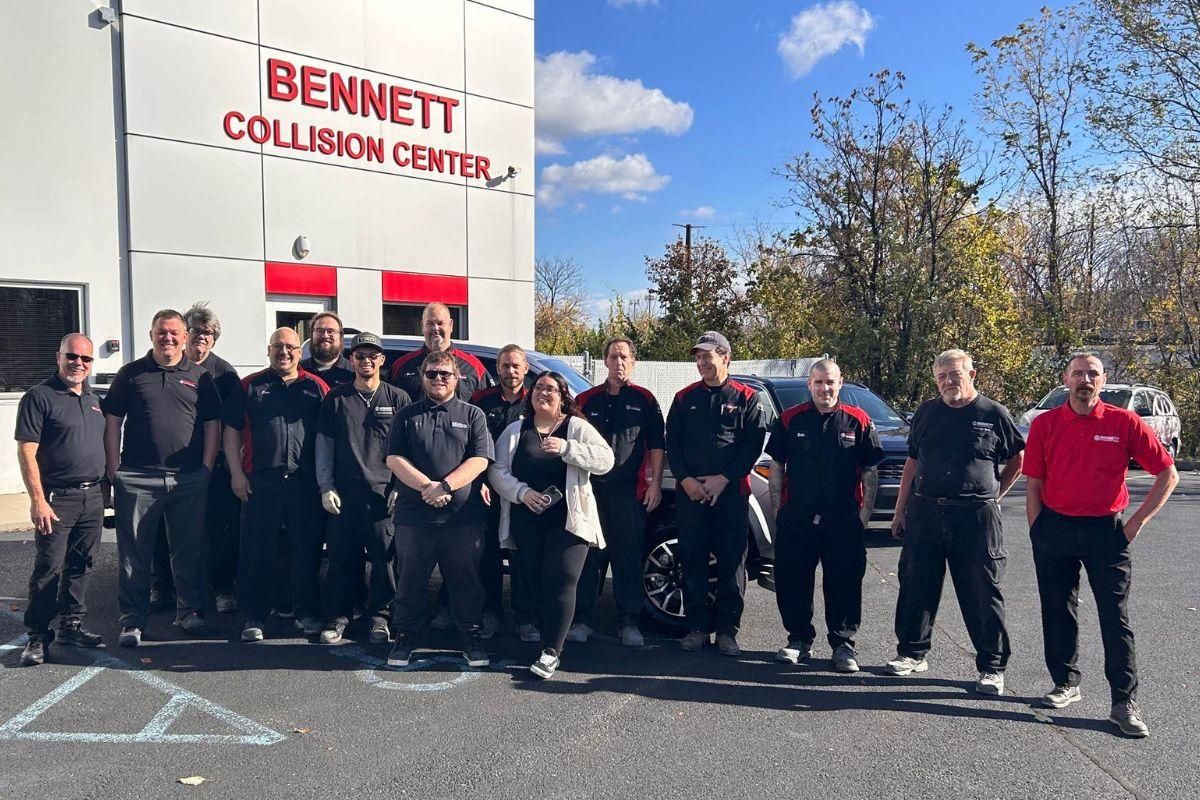Resolutions are a funny thing. We can make them, but are we doing the work?
A saying goes, “Don’t make resolutions -- make changes.” But as another bit of wisdom notes, “You gotta start somewhere.” There’s surely a difference between saying we’re gonna do something and doing it.
So Autobody News asked the industry about that difference. We’d previously talked with owners, operators and others about Thanksgiving gratitude and Christmas giving.
The new question -- What are your New Year’s resolutions? -- garnered fewer responses, at greater depth.
Replies focused on only a few areas, including intentionality, which is that starting point: knowing what we want to do.
Three key action items flow from that: Interact with clients, develop shop staff, plan for the future.
Intentionality; three main tasks. Then get down to doing the work.
Here’s some of how that looks for 2025.
Client Relationships: Come Prepared, Put in the Time
Idaho shop owner Greg Solesbee will be spending more time with his customers this year. A lot more.
“Our revamp is to have everything 100% documented,” he said, “then give that information to the customer.”
This also has to do with shops getting paid for the work. It involves OEM legwork and the Database Enhancement Gateway and knowing the law, Solesbee said.
Nobody said better client interaction was easy. Simple, not easy -- if it was easy, everyone would do it.
 Greg and Rachelle Solesbee at the 2023 SEMA Show.
Greg and Rachelle Solesbee at the 2023 SEMA Show.
“Everything we do revolves around education,” Solesbee said, “and greater interaction with the customer.”
This goes from first greeting to driving the vehicle off your lot -- or delivering it to the client… err, guest.
That’s what Rob Grieve calls them when they come to the shop. Grieve owns Nylund’s Collision Center in Englewood, CO.
“We call them guests here,” he said. And each one is invited to see inside, including during the repairs, “and they get to talk about it.”
That means truly listening to them. What’s really going on, in a from-the-start tough situation.
Then he talks with them more, on a YouTube channel where every Saturday the shop drops a new video. Then there’s a real-time online discussion with viewers. Anyone can comment. Grieves answers questions right then.
“I talk insurance stuff, what technologies are coming out … in plain English,” Grieve said. “My channel is about consumer education.”
The channel has 250 videos in its vault and north of 900 subscribers. It’s approaching a quarter of a million views, functioning as business-side analog to those popular YouTube repair videos.
Comments are often “people begging for help” and from all across the country, he said. If those consumers of the show become guests of the shop, there’s more talk.
“We sit down with guests, showing them the procedures and the parts.”
Are Employees the Most Important Part of a Business?
Chicagoland shop owner John Melendez in 2025 is focusing on building and equipping his staff, in more ways than one. Last year, he bought new equipment and brought on new blood to run it, particularly in the paint department.
The plan for this year is giving them the tools to do well.
That includes physical tools, the actual stuff. With increasing complexity in collision repair, that’s a given. It’s also just the baseline requirement of doing the work; it’s a beginning, not a be all.
Beyond that comes a combination of technical and artistic needs: namely information and mentoring, he said.
“Utilize the older talent,” he said, and tap formal “training materials … pulling procedures … in your strong [standard operating procedures] program.”
This then is not the time to try YouTube, but instead to get on-board how to do the specific repairs your techs face. Work with suppliers of information and training.
 Jeff Peevy.
Jeff Peevy.
This as it happens integrates with the personal approach to guest interaction.
I-CAR, talking 2025, puts the two -- industry professionals and people they serve -- together.
“My mission is to ensure families continue to ride safely in the vehicles our industry services by prioritizing excellence in every repair and industry project,” emailed Jeff Peevy, vice president of industry relations. This year is more focused on what it calls the “empty chair.”
The idea “serves as a powerful reminder for all industry professionals to keep the well-being of families at the forefront of our discussions and decision-making.”
Intentionality Beyond 2025 Means More Planning – And More Action
Melendez adds an eye to the future. He recently told Autobody News about a program JDM Collision plans to start in a charter school for underserved kids. He also has upcoming work with high schools and community colleges on co-op programs for interns.
This isn’t necessarily cheap -- if it was, all the people who didn’t do it when it wasn’t easy would join in.
But some easing of costs is possible. Get vendors and other business partners involved for starters.
Seek a state- or Department of Labor-certified program. Melendez noted the Collision Engineering Program, piloted at Ranken Technical College in St. Louis and now running at seven post-secondary schools nationwide.
Tax credits covering up to half of costs can be available, he said, “if businesses start doing their homework and investing in that individual.”
Training programs for new techs are regularly revised and improved. Laura Lozano at Contra Costa College in California said for 2025, “We took a step back to look at the program going into [the] year, see what we’ve learned so far, and continue to grow.”
A particular focus this year is “the student’s transition into the industry, the professional world. It’s fast, it’s loud, it’s a lot,” and the program will be working more with companies to implement new initiatives.
Melendez said: “We’re focusing on building a new young, solid crew for the future of the business.”
So 2025 goals overlap. Guest and staff experience met; developing staff looks to the future of the business.
“I’m looking to the future, 10 years down the line” said Joe Messina, who owns custom shop Roseleno Inc. in California. He means now the big picture, for a “longish-time dream now in the works.”
2025 for him is to add fun, and “the fun part has been building the business side of it, learning the nuances.”
The shop side, he’s learned since always: at his dad’s shop, or restoring a car a year “just about every year.”
As custom guys hit their ceiling finding labor, at capacity in their digs -- and Messina’s is a “nice old building with a sawtooth wood roof” he has no plans to give up -- they look for a new challenge.
Messina’s looks this year to involve a different angle on automotive services, and greater scale.
“You push all your chips back in the center again,” he said.
An Oar in the Water Headed for Home
Several respondents spoke of work and home in one and a half breaths.

Florida M&A consultant Laura Gay aims for “better balance of work/life” with a focus on health. Her adult son, sick most of last year, is much improved, and she spends a lot of time on the road visiting shops.
“Each year I have become better at mastering work-life balance,” said Tiffany Silva, a California shop owner, “and I hope to continue that trend and chase my dreams with positivity and purpose.”
Pennsylvania certified collision center manager Randy Kuntz expressed -- three ways! -- a freewheeling approach to life, and talked of helping a sister shop achieve its own certification this year, along with, like Melendez in Chicago, more involvement with trade schools.
Liz Stein, vice president of strategic initiatives at shop network CCG, is developing “value added programs to help our shops generate revenue,” while planning a trip to Italy with her high school graduated daughter.
“How long is that going to last,” where parents can spend dedicated time with young adult children. “Spend the time,” she said. “It’s why we do what we do.”
Solesbee in Idaho also plans more family time, including trips, and “actually just doing more” in the family. “Our family’s word for the year is ‘intentional.’”
And there it is again: intention and action.
Casey Koehler, a shop owner in Mississippi, doesn’t make resolutions; they’re too easily dropped. There’s a day set aside for this: Quitter’s Day, on the second Friday of each year.
“Stuff can change in a blink,” he said. “You can have a goal, you can have that mindset, but why have it on one damn day. If you have it,” he added, have it always, and do the work.
Koehler is expanding for the second time, moving to a third building, and looking to greater growth this year. He’s 25 years old.
Resolutions are a funny thing.















Paul Hughes